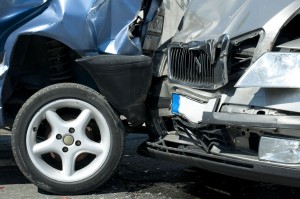 Although a car crash happens in the blink of an eye, the injuries occur in a multi-phase process. Each type of accident has a tendency to cause certain types of injuries. In head-on collisions, victims will typically be injured by impact with the windshield, steering wheel and dashboard. The impact in head-on collision is intensified by the fact that the force of each vehicle is directed at the other.
Although a car crash happens in the blink of an eye, the injuries occur in a multi-phase process. Each type of accident has a tendency to cause certain types of injuries. In head-on collisions, victims will typically be injured by impact with the windshield, steering wheel and dashboard. The impact in head-on collision is intensified by the fact that the force of each vehicle is directed at the other.
Head-On Collision Injuries
Common head-on collision injuries include:
- Brain injuries
- Fractures in the face
- Broken nose
- Soft tissue injuries in the neck
- Spinal cord injuries in the neck
- Neck fractures
- Larynx and tracheal injuries
- Fractured breastbone
- Bruised heart
- Swelling and accumulation of fluid in the sac around the heart
- Accumulation of blood in the lining of the lungs
- Bruised lung
- Collapsed lung
- Flail chest, a condition in which a segment of the ribcage breaks free
- Injuries to the abdominal organs
- Pelvic injury
- Hip injury
- Fractured femur
- Knee injuries
Injuries in a head-on collision are not just from the impact your body makes with the interior of the vehicle. Your internal organs can also be injured when they strike the inside of your body.
For instance, brain injuries can occur with no blow to the head when the extreme forces in a car accident cause your neck and head to jerk so violently that your brain strikes the inside of your skull. Lung injuries can be caused by broken ribs. The heart can be bruised when forces cause it to slam into the breastbone.
If you or a loved one suffered head-on collision auto accident injuries, your first step should be to get medical treatment. However, as soon as possible after the event, you should consult with an experienced motor vehicle accident attorney so he or she can begin an investigation.















